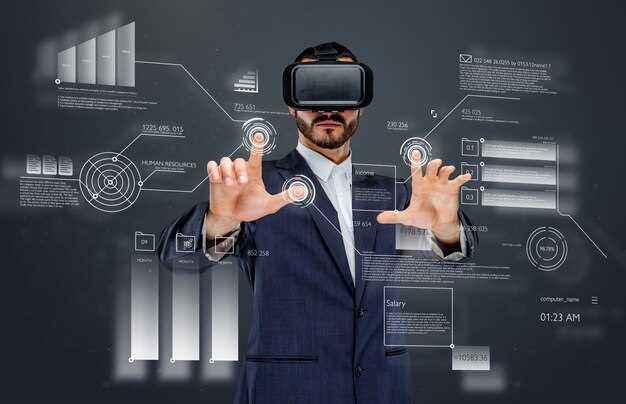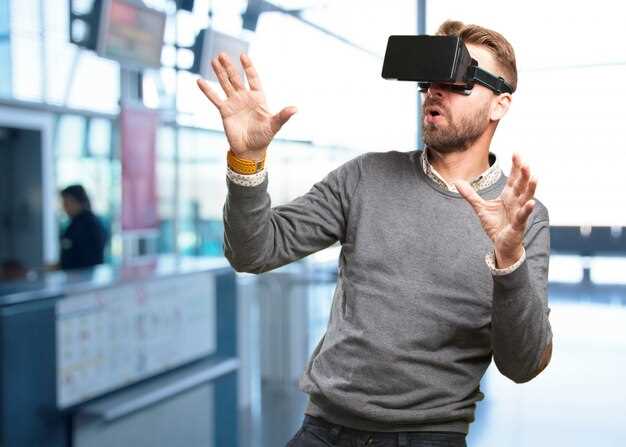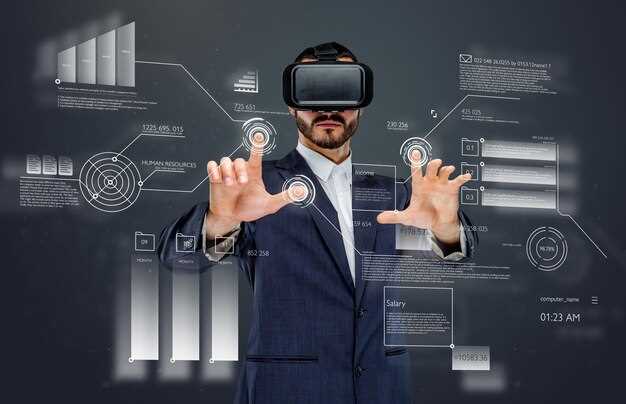
Modern enterprises are constantly on the lookout for fresh methods to establish connections with their audiences. Engaging consumers effectively has become crucial in today’s competitive marketplace. As technology evolves, so too do opportunities to captivate customers. New advancements in immersive experiences have made it possible to create interactive and memorable encounters.
These immersive experiences can significantly transform traditional business practices. From enhancing marketing campaigns to optimizing training processes, innovative concepts have emerged. They not only provide a unique selling proposition, but also elevate the overall customer journey. This level of engagement fosters loyalty and brand recognition, setting a business apart.
The application of emerging tech in various sectors illustrates its potential. Companies are utilizing such innovations to streamline operations and enhance decision-making processes. The significant impact on sales figures and customer satisfaction levels cannot be overstated. By incorporating these dynamic methods into their frameworks, organizations are reaping substantial rewards.
As organizations strive to harness this transformative power, understanding available options becomes essential. Each alternative presents distinct advantages that can ultimately lead to success. In the following sections, we’ll delve into various immersive solutions, revealing how businesses can thrive by adopting these strategic tools.
Exploring Augmented Reality Types for Business

In today’s digital age, innovative technologies are reshaping industries. Companies look for ways to engage customers more effectively. Immersive experiences can revolutionize how prospects interact with brands. This leads to increased visibility and brand loyalty. Different approaches exist that leverage cutting-edge advancements.
Marker-based systems are among the most common implementations. These rely on physical markers, like QR codes, to trigger digital content. Users point their devices at these codes, revealing interactive elements. Such designs are often simple yet impactful. They can provide vital information or promote products effortlessly.
Markerless experiences, on the other hand, use GPS, compass, and accelerometer data. This allows for seamless integration with real-world environments. Users can access features without needing specific markers in sight, making them ideal for location-based advertising. This technique offers utmost flexibility, adapting to user scenarios in dynamic ways.
Projection-based AR showcases virtual images onto physical surfaces, captivating users with engaging visual displays. This type provides opportunities for creative presentations, enabling businesses to highlight features in eye-catching formats. Consider scenarios where companies can showcase products right on a tabletop, allowing potential clients to interact closely with items of interest.
Another exciting option is superimposition-based AR, which replaces or enhances parts of the real-world view. This capability is particularly advantageous in fields such as healthcare or engineering, where detailed visualizations are often necessary. Professionals can view detailed anatomical data superimposed on the patient or model, dramatically improving understanding and decision-making.
Each of these methodologies presents unique advantages and implications. By implementing suitable solutions, businesses can elevate their operations and customer experiences in remarkable ways. Tailoring approaches to meet specific objectives allows companies to set themselves apart in competitive landscapes, ultimately leading to success and growth.
Understanding Different Augmented Reality Solutions

Innovative technologies have transformed interactions in myriad ways. One such remarkable advancement is the integration of immersive experiences into everyday applications. Businesses are increasingly recognizing the power of these interactive enhancements, and they come in several forms. Each solution offers unique advantages, tailored to meet specific needs across various sectors.
Consider the use of gamified elements in marketing. This approach captivates audiences and keeps them engaged. Furthermore, overlaying digital assets onto physical environments provides a rich, informative layer. Businesses leverage this to showcase products or enhance user experiences. Such interactions can significantly improve customer engagement and boost sales.
Another promising avenue lies in training and education, where these technologies facilitate practical learning experiences. Employees can simulate complex tasks safely, allowing for hands-on practice without real-world consequences. This method not only increases retention but also builds confidence in skills required for various roles.
Retailers have begun integrating these methods into their operations, allowing customers to visualize products in real-world settings before making a purchase decision. By utilizing applications that superimpose images or information onto the surroundings, shoppers can see how items will look in their homes, ultimately driving higher conversion rates.
Ultimately, understanding this landscape is crucial for organizations aiming to stay competitive. From enhancing marketing strategies to improving operational efficiencies, immersive technologies serve as powerful tools that reshape traditional practices. Adopting the right approach can unlock new opportunities while fostering meaningful connections with target audiences.
Overview of Augmented Reality in Business
In recent years, immersive technologies have paved new avenues for enterprises. This innovation reshapes interactions, enhancing customer experiences and operational efficiencies. Industries are rapidly adopting these transformations to capture attention and engage consumers. Various applications highlight its potential to revolutionize traditional practices.
From retail to healthcare, organizations are discovering numerous benefits. Interactive elements foster deeper connections between brands and users. Employees also benefit from enhanced training sessions that incorporate engaging visuals. Such methods not only improve learning outcomes but also retain information effectively.
As competition intensifies, leveraging advanced tools becomes increasingly crucial for survival. Integrating this technology into everyday practices streamlines processes and enhances decision-making. This forward-thinking approach ensures companies stay relevant in a rapidly changing marketplace. Ultimately, nurturing creativity while embracing innovation sets successful companies apart from their rivals.
Benefits of AR for Business Strategy
Incorporating immersive technologies into corporate planning can redefine approaches. Organizations adopt innovative tools to enhance engagement and interaction. This leads to improved customer experiences. The integration of visual content creates memorable impressions, ensuring lasting relationships. Such advancements influence decision-making processes in significant ways.
By utilizing immersive experiences, companies can elevate their marketing strategies effectively. Enhanced product visualizations allow customers to connect with offerings more intuitively. Consequently, businesses witness an increase in conversion rates, translating into higher revenues and customer satisfaction. This transformative technology also improves training programs by providing interactive and realistic learning environments that foster skill development.
Moreover, implementing immersive experiences facilitates collaboration among teams. Employees gain new perspectives through shared virtual environments, which can lead to innovative problem-solving. Enhanced communication reduces misunderstandings, streamlining project management workflows. Additionally, tracking user engagement metrics provides valuable insights, enabling refined approaches tailored to client needs.
In summary, harnessing immersive technologies in corporate planning not only improves customer interactions but also enhances internal processes, paving the way for sustained growth and success. Organizations that embrace these advancements position themselves favorably in competitive markets, ensuring they are not just participants but leaders in their industries.
Types of AR Technologies Used in Enterprises
In today’s dynamic marketplace, innovative technologies play a pivotal role in defining success. Among these, AR stands out as a transformative tool. Its application spans various industries, enabling businesses to connect with customers in novel ways. Enterprises leverage different methods to integrate augmented visuals into processes, enhancing efficiency and engagement.
One significant approach is the use of marker-based AR. This technique employs physical objects as reference points for digital information. For instance, a company might use a QR code to trigger a 3D model that showcases their product’s features. Another prevalent option is markerless AR, which relies on GPS and sensor data instead of physical markers. This type allows for a more fluid user experience by overlaying digital content on the real world without needing predefined cues.
Projection-based AR also deserves attention. This form projects digital images onto surfaces in real time. Use cases range from immersive product demonstrations to interactive training environments. Furthermore, superimposition-based AR enhances an object’s visual representation, enabling detailed comparisons between the real and virtual aspects. Taking advantage of these technologies, organizations can create engaging experiences that captivate their audience.
Each method comes with its unique advantages, crafted to address specific enterprise needs. Partnerships with AR solution providers are crucial. They can guide organizations in selecting the best fit for individual strategies. As a result, leveraging these cutting-edge technologies opens up new avenues for innovation and growth.
Choosing the Right AR Solution for Your Needs
Finding an appropriate augmented experience can significantly enhance engagement and efficiency. It’s crucial to analyze various aspects before making a choice. Different industries have unique requirements. Thus, one approach may not suit all scenarios. Identifying objectives is essential.
Begin with understanding where your organization stands. What problems are you looking to solve? Is it enhancing customer interaction or streamlining internal processes? Several options exist, and each serves distinct purposes. Consider aligning your goals with available technologies.
- Assess current infrastructure.
- Determine budget constraints.
- Evaluate user experience.
- Explore integration capabilities.
Cost and practicality often dictate decision-making; however, flexibility can also play a vital role in ensuring sustained success, as implementing a solution often entails not just monetary investment but also training and adaptation by staff.
- Research potential vendors.
- Request demos to gauge functionality.
- Seek feedback from team members.
Involving all stakeholders from the onset fosters buy-in and can lead to more informed decisions. Ultimately, a well-chosen solution will not only meet immediate needs but also provide a scalable pathway for future enhancements, aligning with long-term vision and growth strategies.
Comparing Marker-Based and Markerless AR

In today’s technological landscape, two prominent methods stand out. They provide unique ways to blend digital content with the real world. Each method has its own sets of advantages and applications. Understanding their differences is crucial for informed decision-making.
Marker-based approaches rely on specific visual cues to trigger digital enhancements. These markers can be anything from QR codes to images. When scanned, they enable engaging interactions. This method often ensures accurate placement of virtual elements. However, it requires predefined markers for functionality.
On the other hand, markerless techniques utilize sophisticated algorithms and sensors. They don’t require specific visual triggers to function. Such systems can recognize the environment and locate digital objects without pre-existing markers. They offer greater flexibility and ease of use. Users can experience interactive content anywhere, anytime, as long as their devices support the technology.
Both methods serve distinct purposes and appeal to different audiences. While marker-based apps may excel in educational settings, markerless applications can shine in retail environments. Ultimately, the choice hinges on desired outcomes and user experience goals. Businesses need to weigh these factors carefully when integrating such technologies into their strategies.
How Marker-Based AR Works
Marker-based technology utilizes specific images or patterns as triggers. These markers help software recognize and overlay digital elements onto the real world. The interaction happens swiftly, captivating users with dynamic content. Imagine pointing your device at a unique graphic and immediately seeing an engaging animation on your screen. It’s a seamless fusion of digital and physical realms.
This approach relies heavily on computer vision algorithms that detect markers. Once a marker is identified, the system computes its position and orientation. This calculates how the 3D content should be displayed. Essentially, these markers act as signposts, guiding the application to render relevant information and experiences on top of them.
In practical terms, businesses might design custom symbols or images tailored to their branding, creating interactive advertising campaigns. Customers can scan these markers using their devices, unlocking special offers or immersive experiences like product visualizations. From educational tools to marketing applications, the potential is enormous.
The accuracy and responsiveness of marker-based implementations make them appealing. Users often enjoy a smooth experience when interacting with the content. However, lighting conditions and distance can affect performance sometimes. Thus, preparation and testing become essential steps in creating effective applications.
In conclusion, this technology opens up new avenues for engagement, enhancing user experiences while driving brand recognition. Continuous advancements in this field will only further enrich interactions. As businesses explore innovative paths, marker-based approaches will likely shape the future of user engagement strategies.
Applications of Markerless AR
Markerless augmented experiences offer unique opportunities across various industries. This technology enables users to interact with digital elements seamlessly within real-world contexts. Its adaptability allows for innovative solutions that cater to diverse needs. From enhancing marketing efforts to transforming design processes, the applications are abundant.
Retailers utilize markerless interfaces to create immersive shopping experiences and elevate customer engagement. Businesses can visualize products in real-world environments, giving customers a better understanding of how items fit into their lives. Numerous companies have adopted this method to stand out in a competitive market.
Training and education benefit significantly from markerless features. Employees can learn complex tasks in a simulated environment that mirrors reality. This form of learning enhances retention and helps users develop skills more effectively and efficiently.
Marketing strategies become more impactful when incorporating this technology. Campaigns can offer interactive experiences that capture audience attention and foster emotional connections, leading to increased brand loyalty. As customers engage with content that resonates deeply, companies can see a boost in sales and consumer satisfaction.
| Industry | Application |
|---|---|
| Retail | Virtual try-ons and immersive shopping experiences. |
| Education | Interactive training modules and immersive learning environments. |
| Marketing | Engaging advertising campaigns with interactive components. |
Given its versatility, markerless technology is establishing itself as an essential tool across sectors. It creates a bridge between digital content and physical spaces, enhancing user interactions significantly. Businesses that embrace these advanced solutions position themselves at the forefront of innovation and consumer satisfaction.
Pros and Cons of Each Type
When considering various forms of immersive technology, it’s essential to weigh the benefits and drawbacks associated with each variant. Understanding these factors can aid in making informed decisions tailored to specific needs. Some methods excel in user engagement, while others offer practicality and cost-effectiveness. A balanced perspective is crucial for effective implementation.
- Marker-Based:
- Pros: High accuracy in tracking, easy to create content.
- Cons: Requires physical markers, limited to marker availability.
- Markerless:
- Pros: Flexible in application, no physical objects needed.
- Cons: May have stability issues, can be less accurate than marker-based.
- Projection-Based:
- Pros: Engages audiences through interactive displays, visually impactful.
- Cons: Requires professional setup, limited to fixed environments.
- Superimposition:
- Pros: Enhances real-world objects, great for training purposes.
- Cons: Can be confusing if not done well, requires sophisticated technology.
While each form brings unique strengths to the table, it’s important to recognize potential challenges. Some options offer rich experiences but come with higher costs, while simpler alternatives might lack engagement. A careful evaluation of objectives and available resources can lead to better alignment between technology and goals.
Video:
Augmented Reality | Business Reality
Augmented Reality | Business Reality by Snapchat For Business 3,137 views 3 years ago 37 minutes
Q&A:
What are the primary types of augmented reality (AR) solutions available for businesses?
There are several primary types of augmented reality solutions available for businesses. These include marker-based AR, which uses physical markers like QR codes to trigger digital content; markerless AR, which relies on GPS, compass, or accelerometer data to overlay digital information based on the user’s location; projection-based AR, which projects digital images onto physical surfaces; and superimposition-based AR, which allows for replacing or augmenting parts of a physical object with digital content. Each type has its unique applications and benefits, depending on the business’s needs and objectives.
How can businesses leverage augmented reality to enhance customer engagement?
Businesses can leverage augmented reality to enhance customer engagement by creating immersive experiences that captivate their audience. For instance, retailers can use AR to allow customers to virtually try on products, like clothing or cosmetics, through their smartphones. This interactive experience not only makes shopping more enjoyable but also helps reduce return rates. Additionally, businesses can incorporate AR in marketing campaigns, enabling potential customers to visualize products in their own environment, making purchasing decisions easier and more informed. Ultimately, integrating AR into customer interactions can foster a deeper connection between the brand and its customers, leading to increased loyalty and sales.
Are there any challenges businesses face when implementing AR solutions?
Yes, implementing augmented reality solutions comes with several challenges for businesses. One major challenge is the significant investment required for developing AR applications, which includes costs for technology, software development, and content creation. Additionally, businesses often encounter difficulties with user adoption; customers may need time to understand how to use AR features effectively. There are also technical challenges, such as ensuring that the AR experiences are seamless across various devices and platforms. Furthermore, maintaining the quality and relevance of the AR content can be demanding over time. To successfully overcome these challenges, businesses should conduct thorough market research, invest in user education, and ensure ongoing updates and improvements to their AR solutions.
What industries can benefit the most from using augmented reality?
Several industries can significantly benefit from utilizing augmented reality technologies. Notably, retail and e-commerce companies can enhance the shopping experience through virtual try-ons and interactive visualizations of products. The real estate industry also sees a tremendous advantage as AR allows potential buyers to take virtual tours of properties from the comfort of their homes. Moreover, the education sector can utilize AR to create interactive and immersive learning experiences, making complex topics easier to understand. Healthcare can leverage AR for training professionals and visualizing surgical procedures. Ultimately, while many industries can benefit from AR, those in retail, real estate, education, and healthcare stand to gain substantial advantages by integrating these innovative technologies into their businesses.